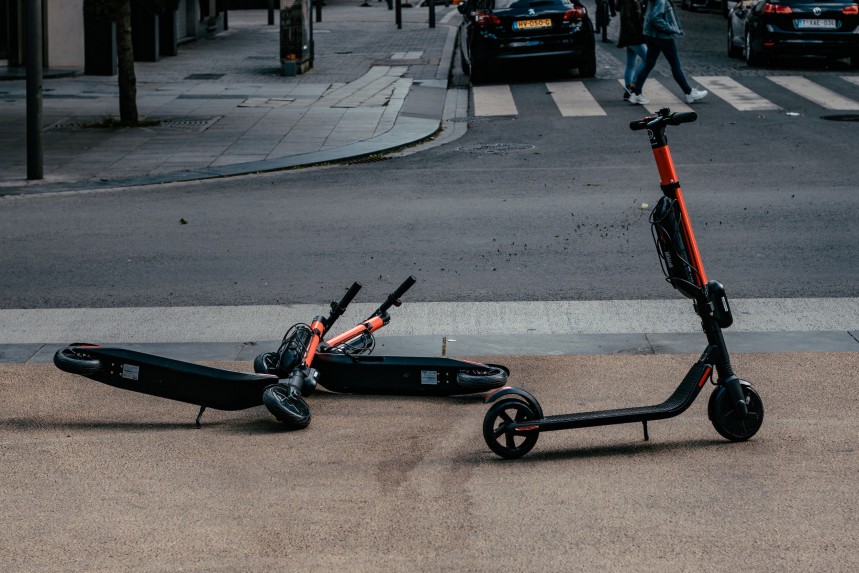The electric revolution has its benefits for sure. However, there's a deeper and darker side to things and one that's actually life-threatening. Yes, electric mobility can be deadly in more ways than one.
Let's face it, recent years have seen a massive swell of electric mobility machines on the market. While that typically means good things for the consumer – competitive business ethics and all – there's also a problem, a lack of control over the products that enter said market. What does this mean?
Well, for the United States, in particular, 39 states surveyed by the U.S. Consumer Product Safety Commission have revealed 208 cases of overheating and fires caused by micro-mobility machines. Oh, and at least 19 fatalities have been caused by this industry. But what does this mean for folks like you and me? That's precisely what we're here to explore.
Now, anytime you hear of fires of any kids, it's definitely a big deal, especially with fatalities involved. But, while those numbers may strike very close to heart, the odds are not against you. Heck, I have two e-bikes, an e-scooter, and a lithium-ion generator in my living room, and I sleep easy. For example, according to Bicycling.com, more than 880,000 e-bikes were sold in the U.S. in 2021, a number that's been projected to double in 2022 (statistics are still being gathered). Couple that with a seemingly endless supply of e-scooters and other EVs for mobility use, and things should start to simmer down a tad.
According to the report by USCPSC, of those 19 cases that met a rather electrified end, 5 were associated with e-scooters, 3 with e-bikes, and 11 were caused by hoverboards. Interesting if you ask me; the less expensive electric mobility devices are the most problematic. But, if we crunch the numbers a bit, assuming 1.5 million Americans own a micro-mobility device, the chances of you being a fatal statistic is 0.0012%. The chances of you being affected by a fire are 0.013%. This may be the perfect time to also point out that around 270 people are struck by lightning each year in the U.S.
As I was exploring this news and trying to figure out just what the hell is going on, I ran across countless sources that project growth for the electrified micro-mobility sector. This means that we expect the number of incidents to grow too. However, it's not all cause for alarm. Quite a few cases that result in such statistics are typically sparked - get it, sparked - by improper use of a product.
This can include an array of actions. For example, imagine falling asleep with a scooter plugged in and the manufacturer not taking the time to include over-charge protection, among others. Boom! Maybe you didn't read the instructions, and you washed your EV with a hose and not a moist rag. Boom! You may not have considered proper storing temperatures for your lithium-stuffed machine. Yup, bang!
Still, this doesn't mean we should all be rushing to sell our precious and gas-saving EVs. One thing to consider is how manufacturers ensure your safety, with countless tests to make sure this sort of situation is avoided. All the gear I currently have in my living room are equipped with some sort of battery safety or monitoring system.
In truth, for an electrified vehicle to be sold, it must first be verified as being safe to use; it makes sense. But production problems can appear in a device, and some of these issues are sure to result from the building process. Heck, even I've returned a phone because it wasn't holding a charge out of the box. Did I mention that shebang that happened with Samsung phones a few years ago? All because of batteries and the way they function.
Wait, how do batteries function, and why are we using a material that appears to be as volatile as lithium? Starting with how batteries work, to put things as simply as I can, there's a chemical reaction happening inside each one, and that reaction is converted to electrical energy once called upon. This process is sparked by the flow of ions inside the battery – a flow from anode to cathode generates electricity, discharging a battery in the process and helping you fly around town.
Why lithium? Aside from a relatively cheap extraction process, the properties of this metal favor it for battery use; typically, it charges faster and is lighter than other metals that could also be used in battery production. This is because lithium has little problems with what ions do to it, be it charging or discharging.
As for the issues that appear, take a look at any instruction manual that comes with your smart device, or any device for that matter, that uses an accumulator (battery), and you'll understand that several issues could have sparked these fires, and none of them are new to our society.
On a side note, I recently purchased a fire extinguisher to have in my home, just in case. However, that's something most homes should include on the premises. Heck, you never know when a cooking fire may erupt; 172,900 cases a year in the U.S. E-mobility, just 208.
Well, for the United States, in particular, 39 states surveyed by the U.S. Consumer Product Safety Commission have revealed 208 cases of overheating and fires caused by micro-mobility machines. Oh, and at least 19 fatalities have been caused by this industry. But what does this mean for folks like you and me? That's precisely what we're here to explore.
Now, anytime you hear of fires of any kids, it's definitely a big deal, especially with fatalities involved. But, while those numbers may strike very close to heart, the odds are not against you. Heck, I have two e-bikes, an e-scooter, and a lithium-ion generator in my living room, and I sleep easy. For example, according to Bicycling.com, more than 880,000 e-bikes were sold in the U.S. in 2021, a number that's been projected to double in 2022 (statistics are still being gathered). Couple that with a seemingly endless supply of e-scooters and other EVs for mobility use, and things should start to simmer down a tad.
According to the report by USCPSC, of those 19 cases that met a rather electrified end, 5 were associated with e-scooters, 3 with e-bikes, and 11 were caused by hoverboards. Interesting if you ask me; the less expensive electric mobility devices are the most problematic. But, if we crunch the numbers a bit, assuming 1.5 million Americans own a micro-mobility device, the chances of you being a fatal statistic is 0.0012%. The chances of you being affected by a fire are 0.013%. This may be the perfect time to also point out that around 270 people are struck by lightning each year in the U.S.
This can include an array of actions. For example, imagine falling asleep with a scooter plugged in and the manufacturer not taking the time to include over-charge protection, among others. Boom! Maybe you didn't read the instructions, and you washed your EV with a hose and not a moist rag. Boom! You may not have considered proper storing temperatures for your lithium-stuffed machine. Yup, bang!
Still, this doesn't mean we should all be rushing to sell our precious and gas-saving EVs. One thing to consider is how manufacturers ensure your safety, with countless tests to make sure this sort of situation is avoided. All the gear I currently have in my living room are equipped with some sort of battery safety or monitoring system.
In truth, for an electrified vehicle to be sold, it must first be verified as being safe to use; it makes sense. But production problems can appear in a device, and some of these issues are sure to result from the building process. Heck, even I've returned a phone because it wasn't holding a charge out of the box. Did I mention that shebang that happened with Samsung phones a few years ago? All because of batteries and the way they function.
Why lithium? Aside from a relatively cheap extraction process, the properties of this metal favor it for battery use; typically, it charges faster and is lighter than other metals that could also be used in battery production. This is because lithium has little problems with what ions do to it, be it charging or discharging.
As for the issues that appear, take a look at any instruction manual that comes with your smart device, or any device for that matter, that uses an accumulator (battery), and you'll understand that several issues could have sparked these fires, and none of them are new to our society.
On a side note, I recently purchased a fire extinguisher to have in my home, just in case. However, that's something most homes should include on the premises. Heck, you never know when a cooking fire may erupt; 172,900 cases a year in the U.S. E-mobility, just 208.
From January 1, 2022 through November 28, 2022, CPSC received reports of at least 208 micromobility fire or overheating incidents from 39 states, resulting in at least 19 fatalities, including five associated with e-scooters, 11 with hoverboards and three with e-bikes.
— US Consumer Product Safety Commission (@USCPSC) December 20, 2022











